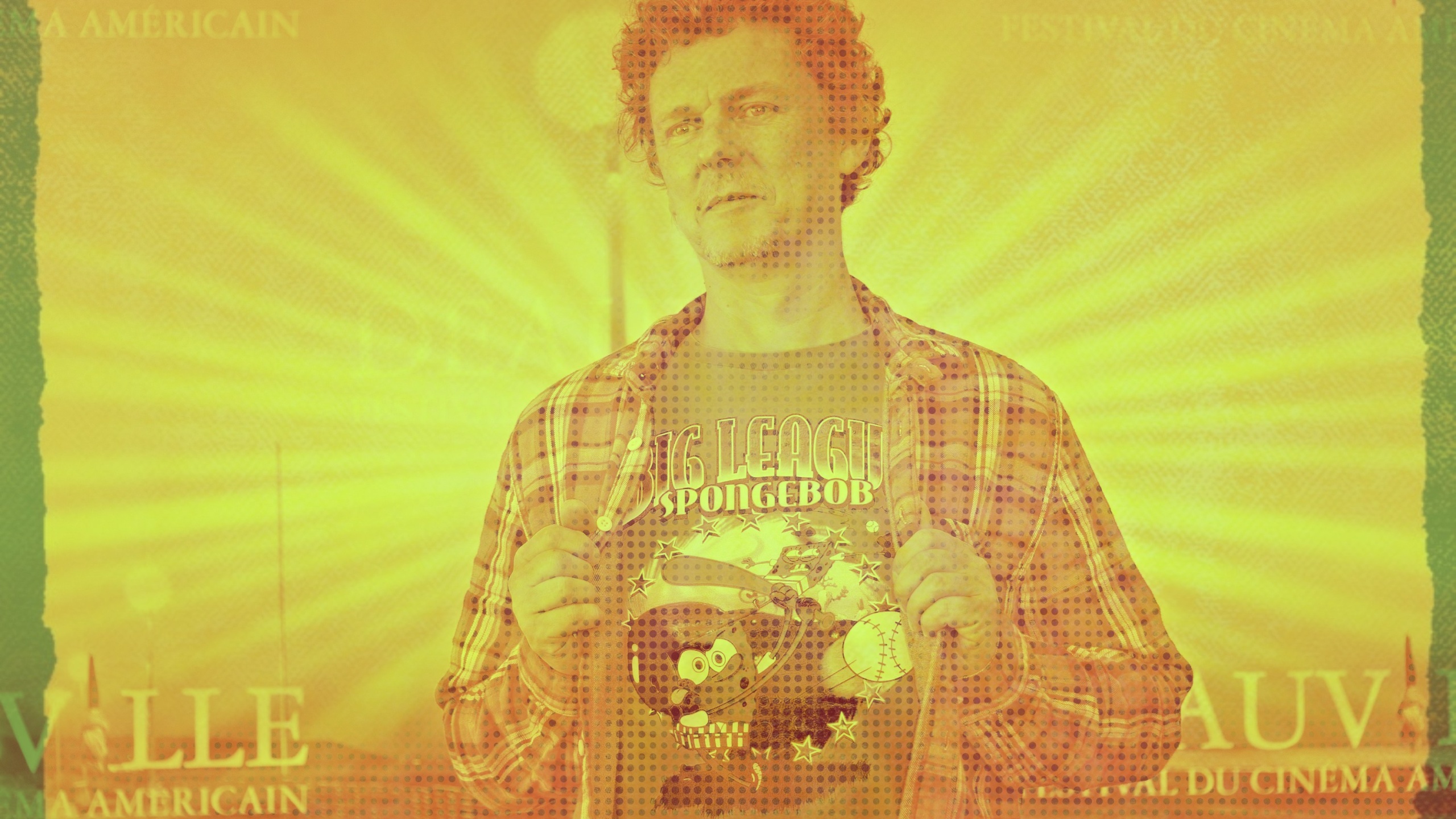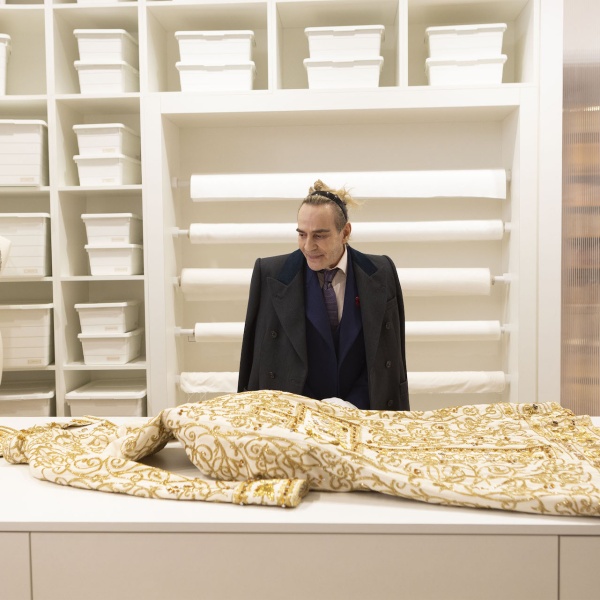Ten years ago, Michel Gondy was directing “Mood Indigo,” his freewheeling and fanciful adaptation of the 1947 French novel “L’Écume des Jours” starring Audrey Tatou. And then he got lost.
“My brain was working in a different way,” he said over Zoom in a recent interview. “Each idea I had, no matter how important or small it was, became about life and death. Every little thing became super important. I felt like I was reaching ultimate creativity.”
He now looks back on the whole experience as a result of his delusional state. The movie ran long and over budget, angering Gondry’s investors. He escaped to the French countryside with his post-production team to finish the project on his own terms. The movie ran over two hours and got mixed reviews; a shorter version was released in the U.S. by Drafthouse Films several months later.
That saga provides the template for “The Book of Solutions,” which premieres at the Cannes market this week in search of U.S. distribution. A direct response to his “Mood Indigo” experience, Gondry’s first feature in seven years is a comparatively small-scale endeavor. The French production stars Pierre Niney as Gondry surrogate Marc, who steals his movie from a studio when executives try to take it away from him and brings his team to his secluded aunt’s house to finish it. With his ambition growing in several eccentric directions — an animated interlude, a car that doubles an editing bay — Marc frustrates everyone within his orbit, including his usually devout editor (Blanche Gardin). As a personal meta-movie, “The Book of Solutions” is a reminder of Gondry’s capricious storytelling proclivities and a sincere mea culpa for the toll they take on his collaborators.
“I had this megalomaniac feeling of being a part of history,” Gondry said, recalling one tangent recreated in the movie in which his character abandons production to make a documentary about an ant. “It was difficult for everyone else because they could not understand why I was triggered by little things, but I could find universes inside them.”
Gondry did in fact retreat to the aunt’s home in the rural Cevanne (subject of his 2009 documentary, “The Thorn in the Heart”), where she still lived in their childhood home, and he insisted on completing “Mood Indigo” on his own terms. The movie, which starred Romain Duris as a wealthy loner who falls for an ailing young woman played by Tatou, marked his first narrative feature after the misbegotten studio effort “The Green Hornet.” That compromised experience sent him hurtling into another extreme of unhindered creativity. “It’s something else to fail when you tried your own rather than to fail when it was not your own idea,” he said. “It’s much more painful. I wanted at least to do it my way.”
Luc Bossi, who produced “Mood Indigo” and co-wrote it with Gondry, acknowledged that the filmmaker felt challenged by the production but not to the extremes depicted in the film. “Michel did go under stress because of the intensity of his feeling responsibility towards one of the most beloved books in French culture, and the level of scrutiny given to its release locally because of the book’s popularity,” he said.
Bossi said he approved of Gondry’s desire to isolate himself during post-production. “At the time, I believe Michel also had in mind to create an artistic community there,” Bossi said. “They worked there for a while, and I suppose that’s the inspiration for the new film because it was certainly unusual and lively. Michel did create many things during this time, including posters for the marketing of the film and a small book with creation advice.”

That tome became one of several narrative devices in his new movie, which finds Marc enmeshed in a series of outlandish creative indulgences, including one prolonged bit in which he coaches an entire symphony to improvise the score by following his ballet-like movements. During the “Mood Indigo” post-production, Gondry did that as well. “It gave me the sensation of driving a Formula 1 car, this feeling of creating something from nothing in a completely different way,” he said. “It was a sensation I’d never had before.”
Marc’s energetic approach to resolving his movie leads him to create the titular guide to his project, a meticulous assemblage of drawings and charts that befuddle everyone else. As he demands participation in his whimsical plan, he’s forced to apologize more than once (and, in one case, apologize for his bad apology). That really happened, too. “The problem is that, after a while, you feel that your apologies have no meaning,” he said. “I talked to my editor from that time. I asked her what her main feeling was towards me, and she said she was worried even though we had the most intense arguments. They were good people and they cared about me beyond what was happening at the moment.”
Gondry has explored the complexities of DIY filmmaking endeavors before with 2008’s “Be Kind Rewind,” but “Book of Solutions” operates on a much smaller scale. Between “Indigo” and “Solutions,” Gondry was the main director on Showtime’s Jim Carrey comedy “Kidding” before it was canceled after two seasons. Gondy said he was gratified by the opportunity to reunite with his “Eternal Sunshine of the Spotless Mind” star (“he doesn’t need the traditional bullshit you sometimes go through with actors”), but his first serious TV undertaking left him uncertain about the medium.
“The main problem with the series is the writer who’s also the showrunner,” Gondry said. “Sometimes, I was frustrated because the showrunner would ask me to make sure every single sentence is shot.” Since his “Eternal Sunshine” days, Gondry has taken a more organic approach by shooting all his actors simultaneously and allowing them to improvise in between scripted lines. “The actors don’t know if you’re shooting them or the other person, so they have no choice, they have to be all the way into their character,” he said. “I had a lot of material I developed and I couldn’t necessarily use it all. That’s why I thought I was better doing films.”
Gondry is currently developing a musical based on the life and music of Pharrell Williams, though he said it could end up delayed by the writers strike. “It’s a pretty big budget, but it’s still something personal,” he said.
While he’s made last few features in France, Gondry has a complicated relationship with the country. He agreed to participate as a member of the Oscar submission committee for France last year and found the experience unsatisfying. “I did it because I didn’t want to upset anyone, but it’s not my thing,” he said. The committee selected Alice Diop’s courtroom drama “Saint Omer,” but Gondry said his own preference was the suburban youth drama “The Worst Ones” and he found himself alone on that front.
“It felt like they were choosing films that could win and not because they were the best films,” he said. “I think that’s a mistake. You have to pick the ones you love. They picked the one they picked because they said it checks all the boxes.” (“Saint Omer” was shortlisted, but ultimately did not land an Oscar nomination.)
Gondry is more committed to creating a support system for newer filmmakers. Ahead of his Cannes premiere, he spoke to me from Dusseldorf, where his production company was participating in a traveling program for emerging directors to write short films with pre-made sets. He said he was happy to create an environment for newcomers, but reticent to offer much feedback.
“The business is not great now, but young directors have a tendency to be quite picky and envision their future too far ahead,” he said. “I encourage as much as I can, I try to be positive, but I have to be very careful. Sometimes people can be really offended.”




